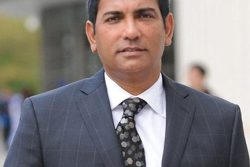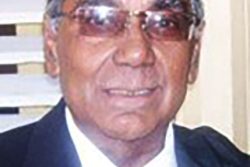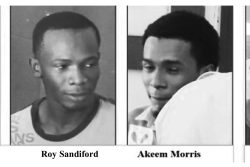Two years after Guyana and Norway signed a groundbreaking US$250 million agreement to protect Guyana’s forests, funds for “low carbon” projects that do not damage the rainforest are yet to flow here.
President Bharrat Jagdeo and Norway’s Minister of the Environment, Erik Solheim signed the Memorandum of Understanding on November 9, 2009 at Fairview, Region Nine. Oslo committed to pay up to US$250 million by 2015 for Guyana’s performance on limiting greenhouse gas emissions from deforestation and forest degradation, and for progress made against governance-related indicators. Wednesday marks the second anniversary of the signing of the MOU.

“It really set an important benchmark for how a forested, developing country could partner with a developed country to try to find solutions to deal with climate change,” said Director of the local office of Conservation International, Dr David Singh in a comment to Stabroek News. The agreement forms part of Norway’s Climate and Forests Initiative which seeks to achieve cost-effective and verifiable reductions in greenhouse gas emissions from deforestation and forest degradation in developing countries (REDD) as part of the battle against climate change.
“We remain concerned that the agreements that were signed, the commitments that were made, we haven’t been able to see the level of progress we were hoping to see,” Dr Singh said. “The progress is not (what) all of the partners expected it would have been,” he added while emphasizing that the agreement was new and the partners did not think it would have been so difficult.
Since the inking of the agreement, Oslo has deposited US$68.8 million into the Guyana REDD+ Investment Fund (GRIF)-the trust fund overseen by the World Bank – which the partners had set up as the financial mechanism through which funds would flow from Norway to Guyana. But to date the GRIF Steering Committee (SC) – which comprises Guyana and Norway – is yet to approve any project for funding though Norway has released US$1.6 million to Guyana outside of the GRIF.
Contacted yesterday, head of the Office of Climate Change, Shyam Nokta said he was in a meeting and could not give an update though he asked that he be contacted later in the week. Agriculture Minister, Robert Persaud said he would respond to questions at a later date as he was “busy with election stuff.”
Stabroek News understands that a GRIF SC meeting is scheduled to be held soon. It is expected that two partner entities–the Inter-American Development Bank and the United Nations Development Programme–would present projects for approval at this meeting. Partner entities submit projects to the SC for approval, receive funds from the GRIF for approved projects and supervise projects according to their own fiduciary, social and environmental safeguards and operational policies and procedures, and report on implementation progress and results.
The sloth in the movement of the money has drawn the ire of Jagdeo who several times criticized the World Bank and other agencies involved in the process.
Guyana had proposed several projects to be funded through the GRIF and for 2011, the investments were the Amerindian Land Titling project for which US$3.9 million were budgeted for this year; the Hinterland Electrification Project for which US$4.25 million were budgeted; the Amerindian Development Fund for Village Economy Development for which US$4 million were budgeted; the Small and Micro Enterprise Development project for which US$3 million was budgeted for this year; the Amaila Falls Hydroelectricity Project for which US$45 million were budgeted; and the Strengthening of the key institutions involved in the implementation of the LCDS, for which US$7 million were budgeted. After several criticisms of the sloth in the process, government has gone ahead and has begun to implement the hinterland electrification project using funds from the treasury. This project involves installing solar home systems in every Amerindian household that has not yet received one through a previous initiative – approximately 10,500 households.
Norway has meantime, released US$1.6M outside the GRIF as interim payments to secure continuation of the ongoing implementation of the system for monitoring, reporting and verification (MRV) of emissions and removals of carbon under the institutional strengthening project.
With regard to the other projects, once they have been approved by the SC, the World Bank has said that it is ready to disburse funds to the partner entities.
Dr Singh said that going forward, it would be desirable to all the parties concerned that project implementation is speeded up. “I would not be surprised if this project has to be extended beyond 2015,” he said.








